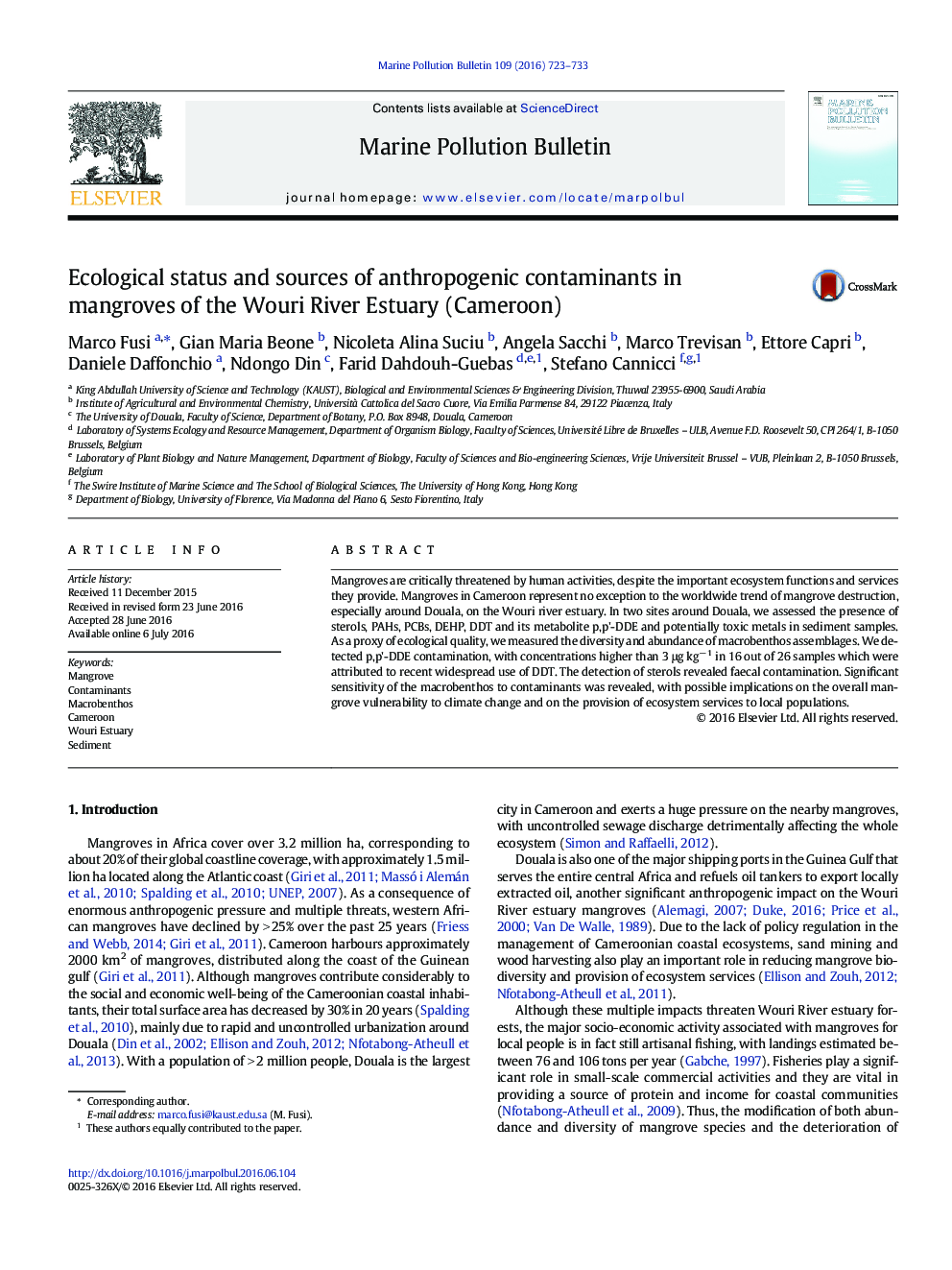| Article ID | Journal | Published Year | Pages | File Type |
|---|---|---|---|---|
| 6355613 | Marine Pollution Bulletin | 2016 | 11 Pages |
â¢Contaminant and macrobenthonic survey was carried out in two Cameroonian mangroves around Douala city, Wouri estuary.â¢Heavy metals, PCBs, PAHs, DDT and metabolites, and sterols were recorded in mangrove sediment.â¢Crab and mollusc assemblages were assessed in both forests and were correlated with the presence of contaminants.â¢Uncontrolled management of urban wastewater was among the most important factor of mangrove contamination.â¢Integration of chemical and ecological data is required for a comprehensive risk assessment of urban impacted mangroves.
Mangroves are critically threatened by human activities, despite the important ecosystem functions and services they provide. Mangroves in Cameroon represent no exception to the worldwide trend of mangrove destruction, especially around Douala, on the Wouri river estuary. In two sites around Douala, we assessed the presence of sterols, PAHs, PCBs, DEHP, DDT and its metabolite p,p'-DDE and potentially toxic metals in sediment samples. As a proxy of ecological quality, we measured the diversity and abundance of macrobenthos assemblages. We detected p,p'-DDE contamination, with concentrations higher than 3 μg kgâ 1 in 16 out of 26 samples which were attributed to recent widespread use of DDT. The detection of sterols revealed faecal contamination. Significant sensitivity of the macrobenthos to contaminants was revealed, with possible implications on the overall mangrove vulnerability to climate change and on the provision of ecosystem services to local populations.
